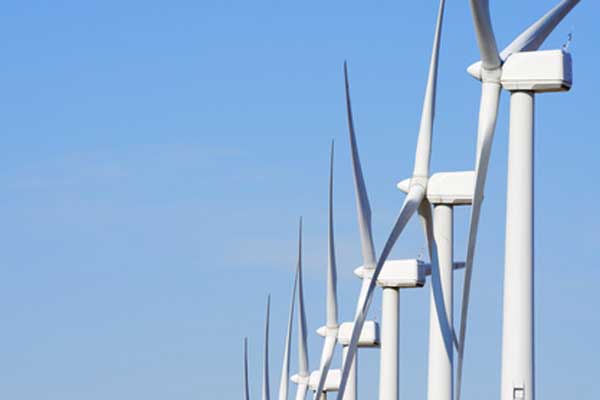The federal Labor Party is today refusing to support an amendment to the Renewable Energy Target which would allow states and territories to grow their clean energy sectors independently of the Commonwealth government.
Labor state and territory governments have expressed their anger at the exodus of jobs and investment triggered by policy uncertainty which has plagued the national Renewable Energy Target (RET).
Adding insult to injury is a clause in the RET legislation that prevents states and territories from developing similar schemes which require electricity retailers to buy renewable energy certificates, effectively subsidising renewables by mandating that retailers must make up a portion of their output with clean energy.
When states and territories agreed to the restriction in 2009 the trade off was that the national scheme would be massively expanded to 41,000 gigawatt hours, electricity retailers would only have to worry about one set of certificates, and states would be able to compete to attract a proportion of the subsidised renewable energy.
But today the Federal Senate is expected to slash the RET by around 20 per cent, down to 33,000 gigawatt hours, effectively diminishing the amount of subsidised clean energy available for states and territories to compete for within the national market and ultimately diminishing their ability to increase deployment.
Federal Labor maintains the cuts are the best option after its two year stoush with the Coalition, which presided over an 88 per cent drop in investment in 2014 as it battled with Labor and the Greens in an attempt to slash the target.
The Greens have introduced an amendment which would alter the government’s bill and return state and territory government’s power to implement a similar scheme to the RET but, perhaps fearing it will derail the fragile deal they’ve struck with the government, Labor will not back it.
This puts the Federal branch of the party at odds with some of its state counterparts, which have been frustrated as they watched the clean energy sector crumple.
The Victorian Energy Minister, Lily D’Ambrosio, has urged the Abbott government to “move out of Victoria’s way and change the law” so that the state can re-implement the Victorian Renewable Energy Target, which it scrapped in 2009 when the national RET was expanded.
“When Tony Abbott is attacking renewable energy he’s attacking Victorian jobs,” D’Ambrosio said: “Get out of the way, change the law and let Victoria have its own renewable energy target, to support our jobs and industry.”
A spokesperson for the Shadow Environment Minister Mark Butler said that the federal Labor party preferred a national scheme, and that Labor will seek to expand it if elected in 2016.
The party’s Federal branch has also been forced to back down on its opposition to the inclusion of native wood waste as a renewable source of energy under the RET legislation after the government demanded it be included at the eleventh hour of recent negotiations.
If the government’s bill passes then native wood waste burning for biomass could make up around 15 per cent of the energy produced under the scheme, which will also further diminish the pool of subsidies for renewables like wind and solar.

Many of the states, and particularly the Labor states, have set high-bar renewable energy targets which are being made increasingly difficult to meet as the debate over the RET drags on and the ambitiousness of the scheme dwindles.
South Australia and Queensland both have targets of 50 per cent renewable energy (by 2025 and 2030 respectively) and with the Federal RET soon to be lowered to just 23 per cent of total electricity use by 2020 across the entire nation it is clear that further initiatives are needed to meet them.
Queensland has recently announced it will follow the Australian Capital Territory’s lead in developing a ‘reverse auction’, which involves companies tendering over which can produce the most renewable energy for the lowest subsidy, but this is considered a relatively expensive method because the cost is borne by the taxpayer.
The ACT’s Environment Minister recently announced the ‘reverse auction’ had been a success, and it’s now forecast to make up 33 per cent of Canberra’s electricity needs by 2017 through the wind component alone. There it still some way to go, however, before reaching its 2020 target of 90 per cent renewable power.
Although the major parties claim the federal deal to cut the RET will restore certainty to the renewables industry and encourage investment to return, experts fear that the scarring will last years and the Greens’ environment spokesperson Larissa Waters said she’s worried that states have been ripped off.
“We need to ensure that Tony Abbott’s vendetta against renewables does not impact on clean energy vision and ambition in states and territories,” she said.
“While Tony Abbott tries to hold up renewable energy for the benefit of his mining donors, states are moving on, like the rest of the world, and embracing clean energy jobs.”
With the Federal Labor party poised to vote against the amendment, and key crossbenchers giving renewable energy a cold reception generally, it’s becoming more difficult to see how states will meet their own ambitious targets.
Donate To New Matilda
New Matilda is a small, independent media outlet. We survive through reader contributions, and never losing a lawsuit. If you got something from this article, giving something back helps us to continue speaking truth to power. Every little bit counts.



